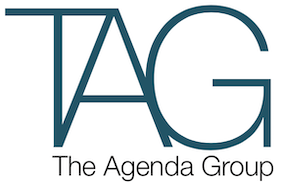It’s not every day that a Government has the opportunity to introduce and design a new tax from scratch. And while it might not be a task a Government will relish it’s an exercise which, as the current debate over the Federal Government’s $8 billion plus carbon tax shows, has to be well considered.
While the scrutiny being applied to the carbon tax is immense, and rightly so, in Victoria work is being done both behind the scenes and publicly to design a new tax to fund the fire fighting brigades across the State. It stands to collect over $0.5 billion in revenue, loose change when you compare it to the carbon tax, but politically as challenging given it will be hitting all Victorian property owners.
The Victorian Coalition Government (as did the former Brumby government) found itself with this new tax after accepting one of the key recommendations of the 2009 Victorian Bushfires Royal Commission (VBRC) which was to replace the existing method of funding the fire services with a new property tax on all properties across Victoria. A couple of weeks ago the Government released a discussion paper about the new tax’s design and asked for public comment from stakeholders. Expect a strong campaign from Victoria’s commercial property owners and farming lobby – each fighting for the other to shoulder the burden.
Currently, the majority of funding for fire services comes from insurance companies who effectively recover this tax through a “fire service levy” – which is an additional charge on the premium. The contribution to Government doesn’t stop there. GST is added to the premium and the fire services levy – and then a further 10 per cent stamp duty is added to the premium, the fire services levy and GST. Effectively, there is a tax on a tax on a tax.
The levy, of which there is a similar model in NSW, has been a political hot spot for years with little support from the community and the insurance industry because of the unfair burden it places on those with comprehensive insurance. Property owners who have no insurance or those who are ‘under insured’ pay less or nothing.
So what are the options for the Government. At first glance, it would appear that if you replaced the fire services levy with a tax levied across a broader base, then most people would end up paying less – in particular, those with insurance. The uninsured would now be forced to make a contribution – something that many in the community, as evidenced by the post-Black Saturday debates, support.
However, it will be nearly impossible to design a tax that results in all insurance payers being better off. The new model will determine how many people are better off – but, and this will be the politically sensitive part – it will also determine how many people are worse off. The options for the Government outlined in the discussion paper range from a differential property charge based on property use – to reflect the amount of fire charge – to a broad based land tax.
Most economists would argue that a broad based land tax on the unimproved value of land would be the most efficient. They would argue – that unlike income and consumption taxes – this form of tax is ‘non-distorting’ as it impacts all land equally and does not impact on consumer choices. However, whilst an effective and efficient tax, if the Government went down this path, land-rich tax payers would pay a lot more than the current fire services levy – which would hit farmers and manufacturers especially hard.
Alternatively, the Government could tax the ‘improved value’ of land – which disregards the underlying land value. While this model would address the imbalance faced by farmers and manufacturers from a land tax, it would fail the efficiency test as it could distort land owners decisions to improve the capital on the land. And politically, it would create challenges as those taxpayers with considerable value in their buildings would potentially pay a lot more. In fact, some individual tax payers, with investments in shopping centres and large residential buildings could even pay millions more under this model.
Another option could be to charge an appropriate fee based on fire risk and the probability of using fire services with a cap in the annual charge. Again this has political ramifications with “mum and dad” home owners likely to be slugged more, igniting the cost of living debate.
The Government appears to have broad based community support for adopting a fairer property tax over the old fire services levy but its biggest challenge will be selecting the appropriate model – which will ultimately determine who will be the winners and losers.
